The Indian lilac is a small tree, originating in India and China, and also known, in the Mediterranean region, by the name “pater noster”, or “arbre à chapelet”, because the women in that area string together the kernels of these bright yellow fruit to make rosaries. Its flowers are of a pale rose interior and dark lilac on the outside; they grow in fragrant bunches and blossom in February and March. Its fruit is the size of a little olive, which is first green, then turns to yellow.
But one cannot judge a book by its cover, because behind its mauve inflorescences and its honey-like perfume, the Indian lilac, in high doses, is poisonous. Moreover, it is within this toxicity that its principal uses are found: since its wood is not attacked by insects, it is sought after to make pillars for houses and supports for mines.
The Lao put leaves of the kadao xang in their jars of grain to protect it from pests, they also use them to kill the paddy field crabs. It is important to note, however, that although the fruits are toxic if consumed by man or pig, they are eaten with impunity by birds and sheep.
Le lilas du Japon est un petit arbre originaire de l’Inde et de la Chine, connu aussi dans la région méditerranéenne sous le nom de « pater noster » ou « arbre à chapelet », parce que les femmes enfilaient les noyaux de ses petits fruits jaune clair pour confectionner des chapelets.
Ses fleurs, rose pâle en dedans, lilas foncé en dehors, groupées en grappes odorantes apparaissent en février et mars. Son fruit est de la grosseur d’une petite olive, d’abord vert puis jaune.
Mais il ne faut pas se fier aux apparences car derrière ses inflorescences mauves et son parfum de miel, à forte dose, Indian lilac est toxique. C’est d’ailleurs dans cette toxicité que résident ses principales utilisations puisque son bois est recherché comme n’étant pas attaqué des insectes, on en fait en particulier les colonnes des maisons et les étais des mines.
Les Lao mettent les feuilles de kadao xang dans les jarres à grains qu’ils veulent protéger des nuisibles, ils les utilisent aussi pour tuer les crabes de rizières. Il faut cependant remarquer que les fruits qui seraient toxiques pour l’homme et le cochon, sont mangés impunément par les oiseaux et les moutons.
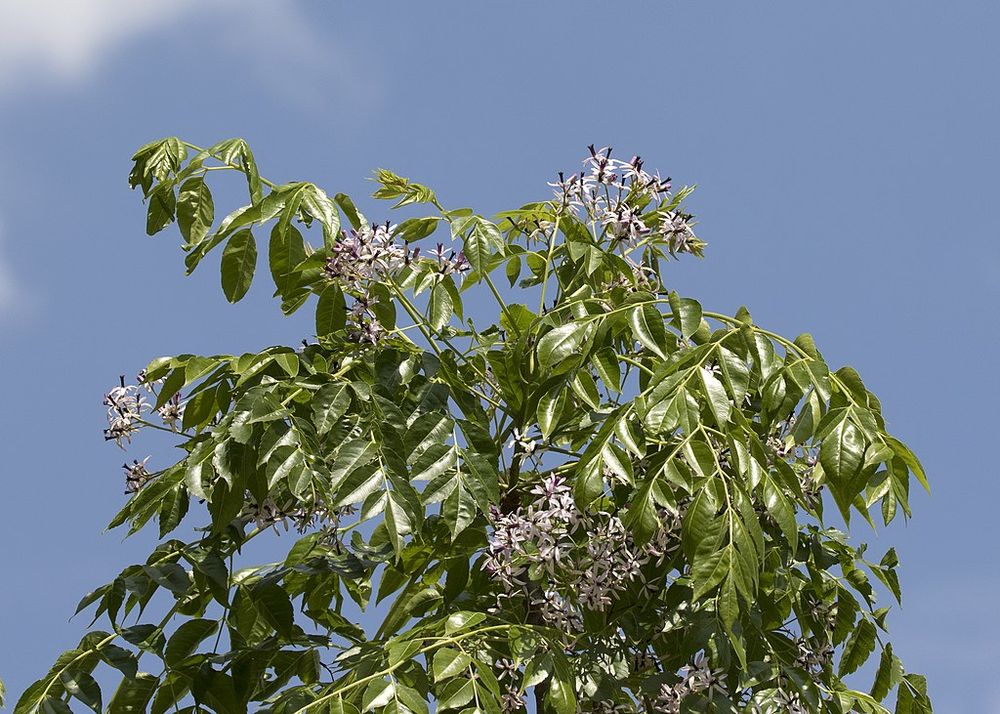
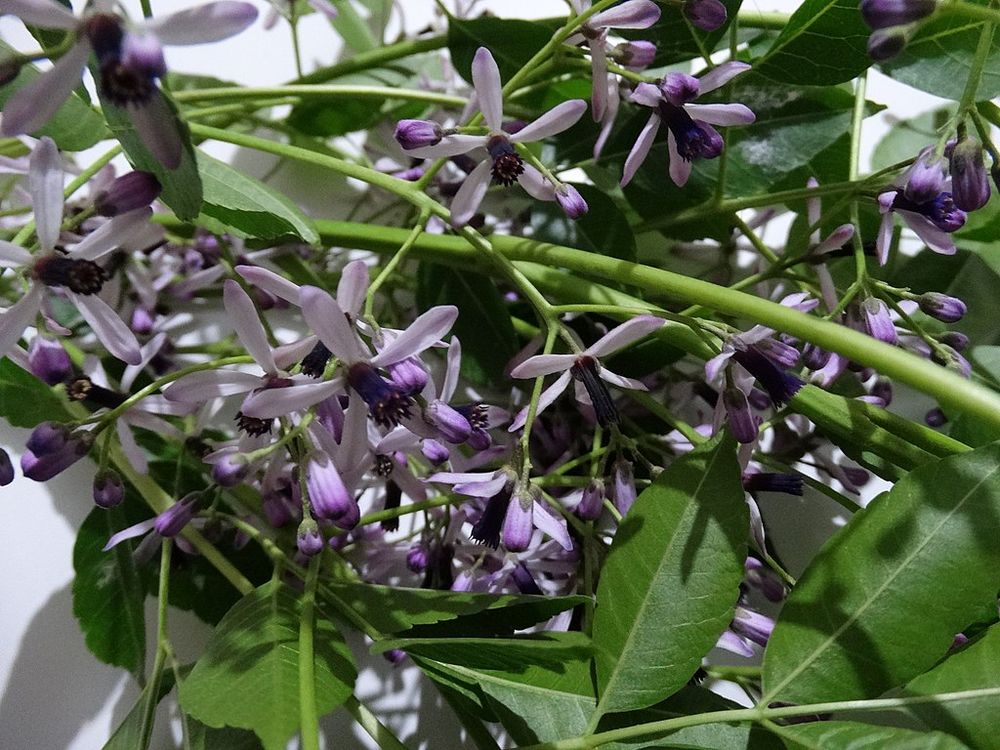
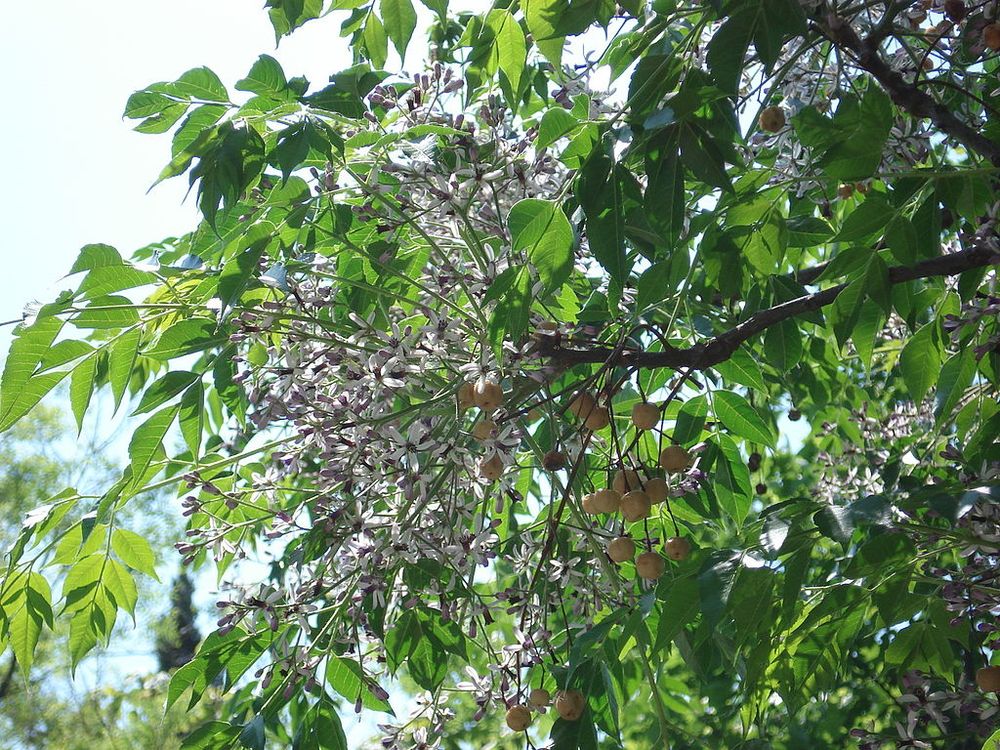
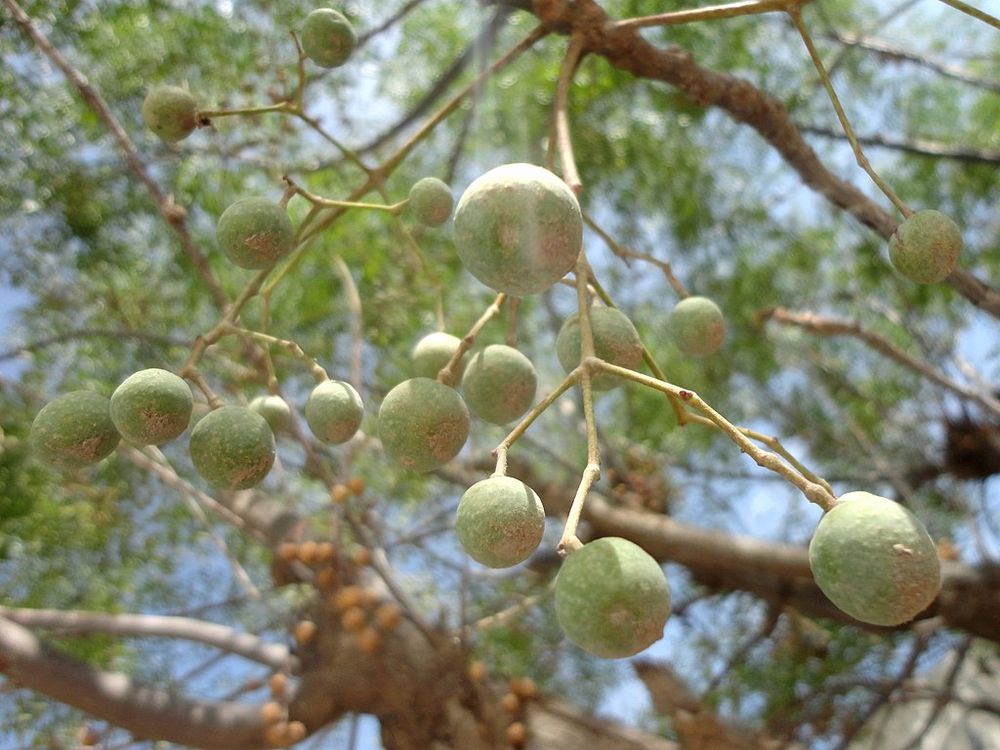
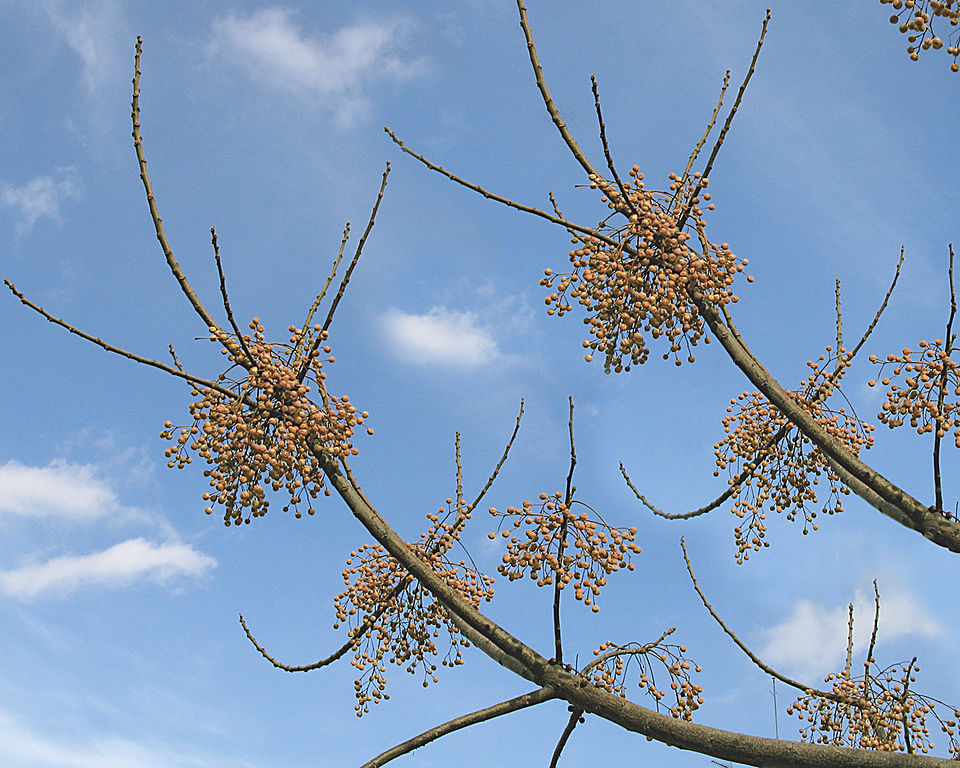
The Indian lilac is a small tree, originating in India and China, and also known, in the Mediterranean region, by the name “pater noster”, or “arbre à chapelet”, because the women in that area string together the kernels of these bright yellow fruit to make rosaries. Its flowers are of a pale rose interior and dark lilac on the outside; they grow in fragrant bunches and blossom in February and March. Its fruit is the size of a little olive, which is first green, then turns to yellow.
But one cannot judge a book by its cover, because behind its mauve inflorescences and its honey-like perfume, the Indian lilac, in high doses, is poisonous. Moreover, it is within this toxicity that its principal uses are found: since its wood is not attacked by insects, it is sought after to make pillars for houses and supports for mines.
The Lao put leaves of the kadao xang in their jars of grain to protect it from pests, they also use them to kill the paddy field crabs. It is important to note, however, that although the fruits are toxic if consumed by man or pig, they are eaten with impunity by birds and sheep.
Le lilas du Japon est un petit arbre originaire de l’Inde et de la Chine, connu aussi dans la région méditerranéenne sous le nom de « pater noster » ou « arbre à chapelet », parce que les femmes enfilaient les noyaux de ses petits fruits jaune clair pour confectionner des chapelets.
Ses fleurs, rose pâle en dedans, lilas foncé en dehors, groupées en grappes odorantes apparaissent en février et mars. Son fruit est de la grosseur d’une petite olive, d’abord vert puis jaune.
Mais il ne faut pas se fier aux apparences car derrière ses inflorescences mauves et son parfum de miel, à forte dose, Indian lilac est toxique. C’est d’ailleurs dans cette toxicité que résident ses principales utilisations puisque son bois est recherché comme n’étant pas attaqué des insectes, on en fait en particulier les colonnes des maisons et les étais des mines.
Les Lao mettent les feuilles de kadao xang dans les jarres à grains qu’ils veulent protéger des nuisibles, ils les utilisent aussi pour tuer les crabes de rizières. Il faut cependant remarquer que les fruits qui seraient toxiques pour l’homme et le cochon, sont mangés impunément par les oiseaux et les moutons.










The Indian lilac is a small tree, originating in India and China, and also known, in the Mediterranean region, by the name “pater noster”, or “arbre à chapelet”, because the women in that area string together the kernels of these bright yellow fruit to make rosaries. Its flowers are of a pale rose interior and dark lilac on the outside; they grow in fragrant bunches and blossom in February and March. Its fruit is the size of a little olive, which is first green, then turns to yellow.
But one cannot judge a book by its cover, because behind its mauve inflorescences and its honey-like perfume, the Indian lilac, in high doses, is poisonous. Moreover, it is within this toxicity that its principal uses are found: since its wood is not attacked by insects, it is sought after to make pillars for houses and supports for mines.
The Lao put leaves of the kadao xang in their jars of grain to protect it from pests, they also use them to kill the paddy field crabs. It is important to note, however, that although the fruits are toxic if consumed by man or pig, they are eaten with impunity by birds and sheep.
Le lilas du Japon est un petit arbre originaire de l’Inde et de la Chine, connu aussi dans la région méditerranéenne sous le nom de « pater noster » ou « arbre à chapelet », parce que les femmes enfilaient les noyaux de ses petits fruits jaune clair pour confectionner des chapelets.
Ses fleurs, rose pâle en dedans, lilas foncé en dehors, groupées en grappes odorantes apparaissent en février et mars. Son fruit est de la grosseur d’une petite olive, d’abord vert puis jaune.
Mais il ne faut pas se fier aux apparences car derrière ses inflorescences mauves et son parfum de miel, à forte dose, Indian lilac est toxique. C’est d’ailleurs dans cette toxicité que résident ses principales utilisations puisque son bois est recherché comme n’étant pas attaqué des insectes, on en fait en particulier les colonnes des maisons et les étais des mines.
Les Lao mettent les feuilles de kadao xang dans les jarres à grains qu’ils veulent protéger des nuisibles, ils les utilisent aussi pour tuer les crabes de rizières. Il faut cependant remarquer que les fruits qui seraient toxiques pour l’homme et le cochon, sont mangés impunément par les oiseaux et les moutons.


